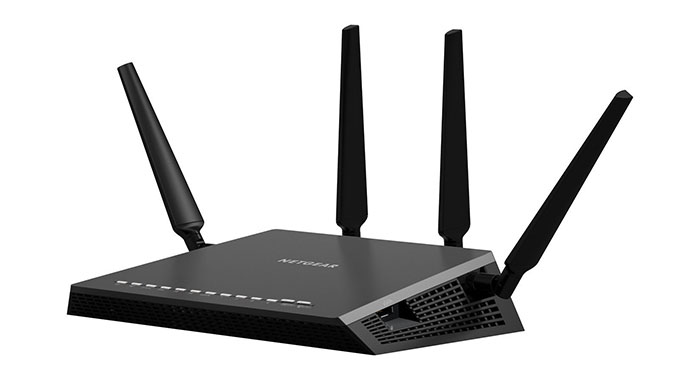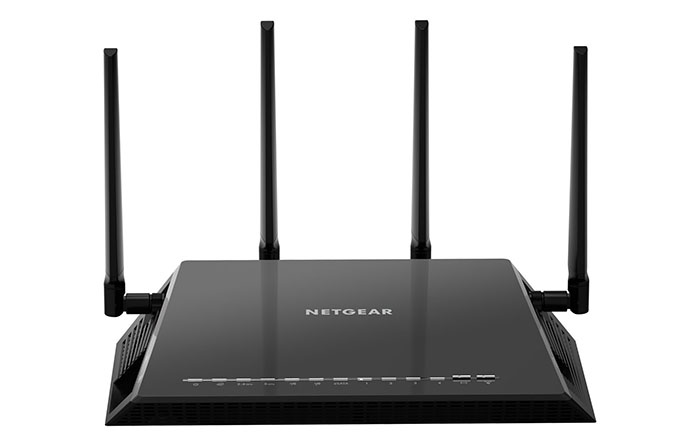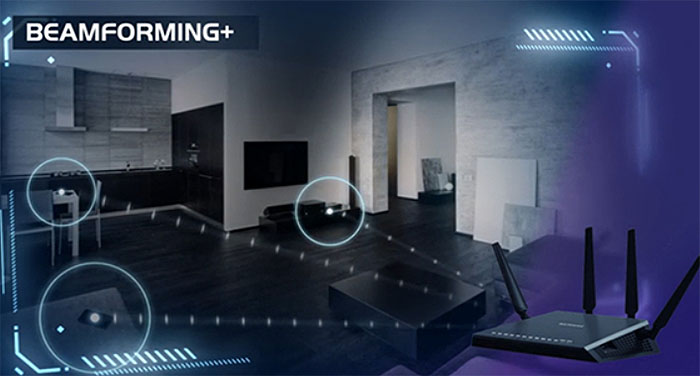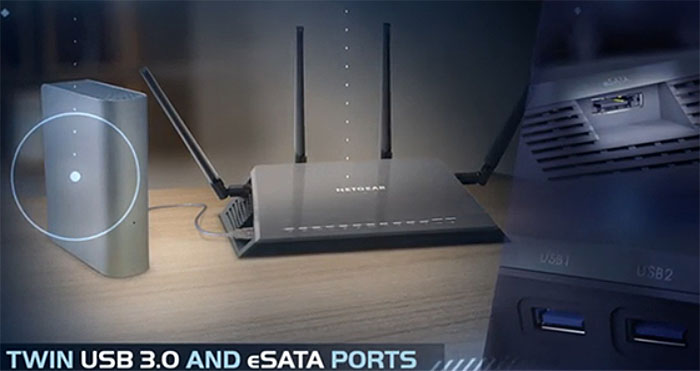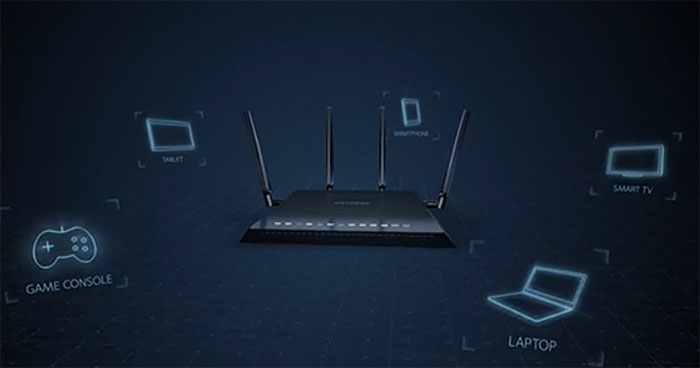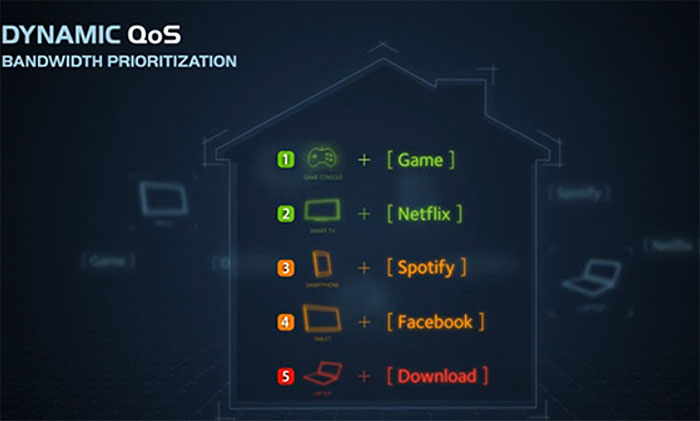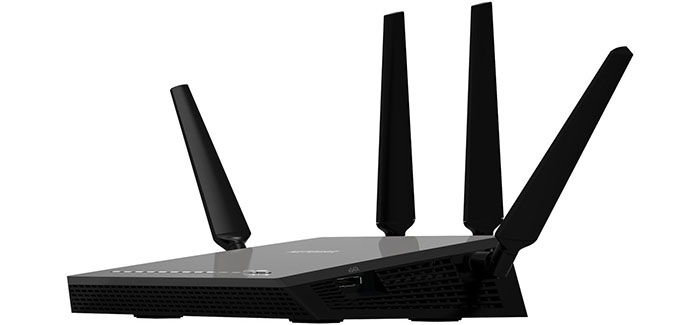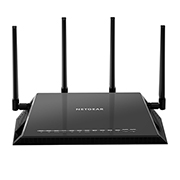NETGEAR has made great contributions to the networking field over the years and has delivered lots of high quality routers (especially with Nighthawk R7000). Almost a year and a half ago, NETGEAR released the Nighthawk X4 AC2350, a second wave router, which offered a solid performance and it was well equipped, but surprisingly, it under-performed a bit, when compared with the competition (ASUS RT-AC87U).
| NETGEAR Nighthawk X4 AC2350v2 | |
|---|---|
| Amazon.com | Check Offer |
A few months ago, the X4 received an important hardware update, NETGEAR catching up with the latest technology available on the market. So, how well has it improved and how does it fare against other similarly equipped routers from the competition? Let’s have a look.
IMPORTANT: NETGEAR didn’t make a clear distinction between version 1 and version 2, meaning that if you buy it online, you just have to see what you get, otherwise, you can just look on the package for the “Now with MU-MIMO” phrase.
UPDATE (12.21.2016): Netgear has released a firmware to fix the recent arbitrary command injection vulnerability that affected the Nighthawk X4 R7500.
Design
NETGEAR Nighthawk X4 looks very similar to the R7000, featuring the same angular design (reminding us of the Lockheed F-117 Nighthawk stealth plane), with a fingerprint-repellent black matte and with the same sturdiness we were accustomed, no matter the amount of connected cables.
The plastic case may seem a bit bulkier than the previous instalment because of the four detachable antennas, but in reality it only measures 11.22 x 7.26 x 1.97 inches and it weighs 26.4 ounces. Just like the R7000, the new R7500 will fit right in if you have a modern-type furniture setup, but undoubtedly will attract attention, because it has quite a large footprint and it’s not discrete in any way.
Sure, it isn’t a boring design at all, it steered clear from the bug-like design of the LINKSYS WRT1900ACS, but adopted the menacing robot-like aspect (with its tiny hands and legs).
The four antennas are specifically labelled from 1 to 4 in order to be attached in their dedicated spots and failing to do so will result in the antennas facing the wrong way (but it’s quite hard to overlook this aspect, because the labels are printed on an yellow background, thus easily attracting attention).
If you don’t have enough space, the Nighthawk X4 can also be wall-mounted (being VESA compatible) and if you don’t want the LEDs to be visible, you can turn them off at a touch of a button.
The front of the router is home of the status LED lights responsible for Power, Internet, 2.4GHz and 5GHz band, two USB 3.0, an eSata, four LAN LEDs and the last two are actually buttons (masquerading as LEDs), one for turning the WiFI ON and OFF and the other is for WPS Push N Connect.
In terms of ports, the NETGEAR R7500 is quite rich, so on the back you can find a button for turning the LED lights ON or OFF, a recessed RESET button, the usual four GIGABIT LAN ports, a GIGABIT WAN port, a Power port and a button for turning the Power ON and OFF.
On the left side of the router there are two USB 3.0 ports and on the right side, you can find an eSATA port. We welcome the addition of an extra USB 3.0 (while the other routers offer only one) and it’s a good choice from NETGEAR to move both ports on the side, unlike the Nighthawk R7000‘s frontal position. This will prevent a mess of cables.
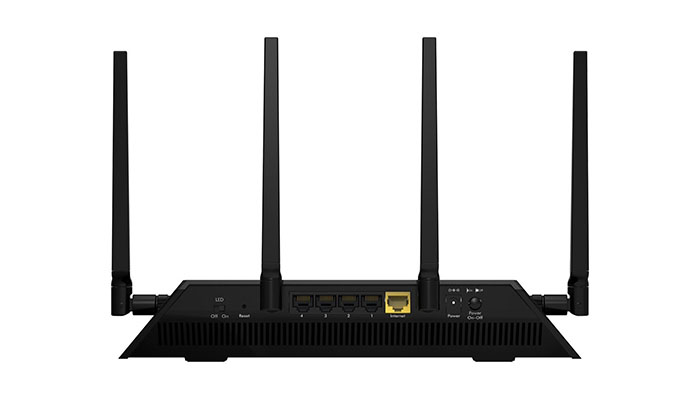
The case is well ventilated, there are lots of vent grilles on the sides and back and also, the base of the X4 is perforated allowing for a good airflow, so overheating shouldn’t be a problem.
Now that we saw how is the Nighthawk X4 designed and what features does it have, what can we additionally expect in the package. Well, there are the 4 antennas, a Quick Install Guide, a 6-foot Power Adaptor and an Ethernet Cable.
Hardware
Inside the case, NETGEAR has equipped the Nighthawk X4 with a dual-core 1.4 GHz Qualcomm IPQ8064 Processor (Atheros QCA8337 switch chipset), backed by a 256 MB RAM and 128 MB flash memory.
Now, while the previous version of Nighthawk X4 featured the usually used Quantenna QSR1000 5GHz 4X4 AC “MU-MIMO ready” radio, NETGEAR decided to switch to Qualcomm and use the new QCA9980 4-stream 802.11ac MU-MIMO radio 5GHz (making the MU-MIMO technology actually usable).
For the 2.4Ghz radio, the X4 remained equipped with the same 3-stream QCA9880. So, the router supports (thanks to wifi beamforming) a maximum link rate of 600 Mbps on the 2.4GHz band and up to 1733 Mbps for the 5GHz band. These two added, put the Nighthawk X4 in the AC2350 class, next to ASUS AC2400 RT-AC87U and LINKSYS E8350 AC2400.
Performance and Connectivity
Despite the powerful hardware, the original NETGEAR Nighthawk X4 didn’t really live up to the expectations. But, because of the improvement we expect to see better results.
In order to actually thoroughly test the X4 you need a receiver that supports four 802.11ac streams and there’s none on the market, unfortunately. So, we were left with two options, use another Nighthawk X4 in bridge mode or use a 3×3 client (a Macbook Pro). And we did both.
Note: Simultaneously, we compared the results with the first version of NETGEAR Nighthawk X4.
Testing the router, using a 3×3 client, on the 5GHz band, we got 460 Mbps (while R7500v1 got 430 Mbps) at close proximity (5 feet). At 15 feet, the router managed 415Mbps (R7500v1 got 370Mbps) and at long range (100 feet), we measured 220 Mbps (R7500v1 reached 180 Mbps).
Afterwards, we tested the router using the 2.4Ghz band. We got 137 Mbps (R7500v1 maxed a 140 Mbps) at close proximity (5 feet). At 15 feet, the router reached 135Mbps(while R7500v1 reached 132 Mbps) and at 100 feet, we measured 104 Mbps (and 80Mbps for R7500v1).
Now, we connected another Nighthawk X4 router in wireless bridge, using the 5GHz band and we got these results: at 5 feet, the router reached a maximum of 870 Mbps, at 20 feet it dropped to 720 Mbps and at 100 feet the router reached a surprising 314 Mbps.
So, obviously, the new hardware made a huge impact on the X4 R7500’s wireless performance, the coverage got wider (almost 300 feet) and some results were really close to what ASUS RT-AC87U can deliver.
But, as you saw before, there aren’t any 4×4 client devices and there’s only a handful that are capable of supporting 3×3 streams of data. Another important aspect is that the router handles a large amount of clients (wired or wireless) without disconnecting.
If you read the design section, you saw that the Nighthawk X4 allows you to connect three external storage devices and because the chipset is better, we expect improved NAS performance. Here are the results: we moved a 2GB file and we got 43 MBps writing speed and 78 MBps for reading.
These are really great results and we only saw such high NAS speeds (and higher) with the LINKSYS WRT1900ACS, both routers featuring speeds comparable with dedicated NAS servers.
Setup
While other companies (like ASUS, LINKSYS or TP-LINK) have improved their software over time, meaning the setup and the configuring process is better with every instalment, NETGEAR did not. Meaning, it’s very similar to what Nighthawk R7000 had to offer and although, this is version 2 of the X4 R7500, software-size is the same (with only some tweaks in the front page).
Fortunately, setting up the router is still quick and easy. All you have to do is navigate to www.routerlogin.net (in your browser) and start the setup wizard. The router is preconfigured with the 2.4GHz network and, as for the 5GHz band, it has the same password as the 2.4GHz network and the same name (with an added 5G suffix). If you want to change the passwords and names or do any advanced configuration, you have to go through the interface.
Nighthawk X4 uses the same ol’ Genie user interface, which offers two separate areas, Basic and Advanced. The Basic section allows you to configure the Netgear Guest Network and the Dynamic QoS, see the number of attached devices and the status of Internet and Wireless connection. There’s also the ReadyShare section, where you can see your connected USB devices and manage clients.
The Dynamic QoS is a very important part of the X4. It allows you to customize which client needs more bandwidth and which one does not. So the prioritization will be made considering aspects like gaming, streaming or browsing and each will receive the needed bandwidth.
To make this work even better, NETGEAR created a database of applications, which will be updated regularly (manually or automatically), consisting of the necessary bandwidth, latency and more. This feature works really well, rivalling the Adaptive QoS of the ASUS RT-AC87U.
Although it’s called basic, this section is not really user-friendly and can be intimidating for beginners, there are lots of options and settings that most won’t understand and should have been better found in the advanced section. That being said, there are some advantages, the NETGEAR NIghthawk X4 is packed with every feature and option you would want to see on a router.
So, there’s Port forwarding, Dynamic DNS, Parental Controls, DoS attack prevention, IPv6, FireWall, OpenVPN server and more (most of them can be accessed through the Advanced section, where you can do a more in-depth configuration of the router).
Note: You can download the Genie app on your phone (iOS, Android or Windows), but you can access the router only if you’re in your local network. Also, the mobile app doesn’t give you access to all settings, only the ones that the majority of users will most likely use on a regularly basis.
Although the NETGEAR Genie is packed with features and it’s easy to setup, it is not easy to customize and may not feel as user-friendly as other routers from the competition. It’s quite clear that it needs an upgrade.
Note: If you decide to purchase this router, be sure to check any Netgear router updates before actually putting it to use.
Conclusion
NETGEAR Nighthawk X4 is a capable router and because of the latest upgrade (which enables MU-MIMO), it is now a lot more valuable than before. It features great speed performance and coverage, the same interesting design and although the software is a bit complicated, it is packed with options and features. Also, it suffered a price drop recently, so it’s worth checking out.
Note: ASUS has also upgraded its AC2400 RT-AC87U router recently to enable the MU-MIMO technology.
Check the product here:

Mark is a graduate in Computer Science, having gathered valuable experience over the years working in IT as a programmer. Mark is also the main tech writer for MBReviews.com, covering not only his passion, the networking devices, but also other cool electronic gadgets that you may find useful for your every day life.

